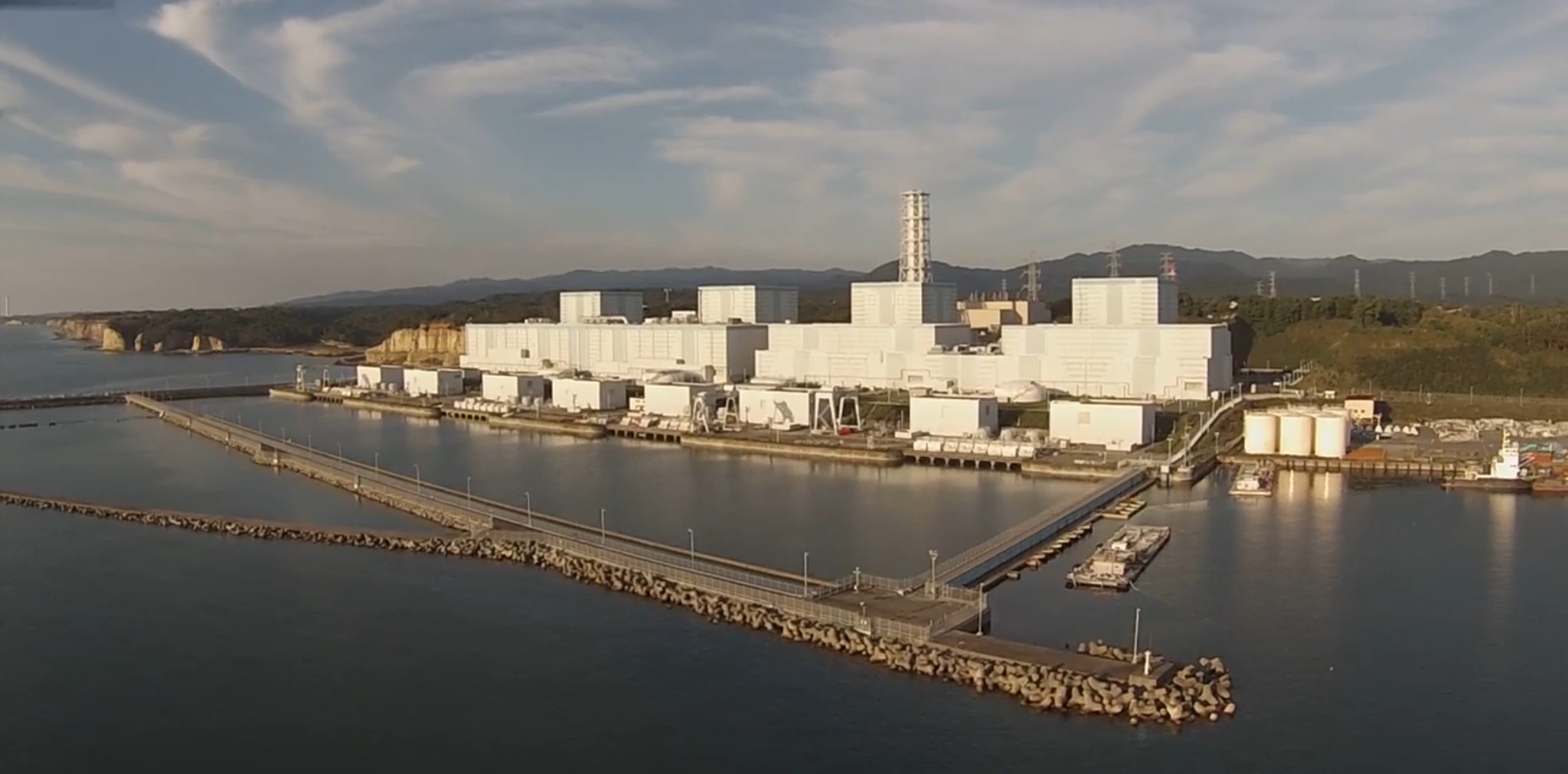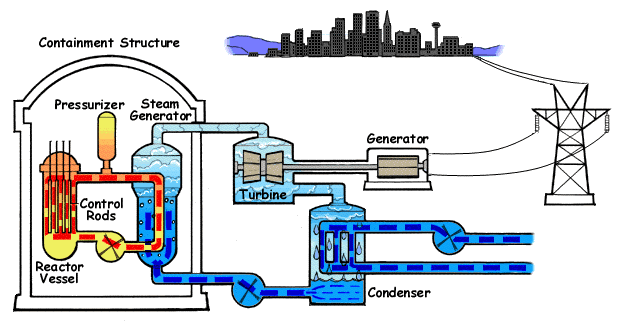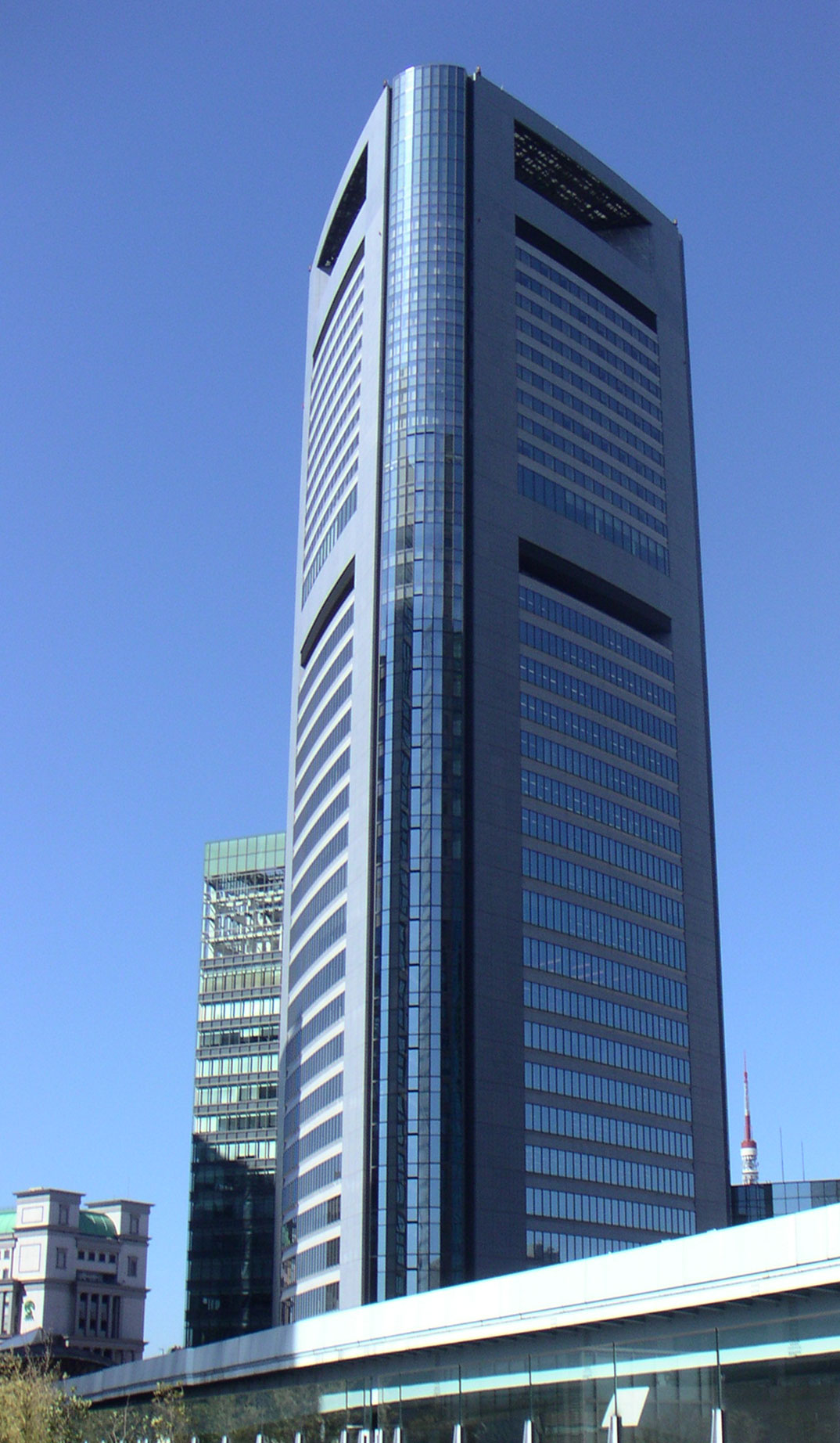|
Tomari Nuclear Power Plant
The is the only nuclear power plant in Hokkaidō, Japan. It is located in the town of Tomari in the Furuu District and is managed by the Hokkaido Electric Power Company. All of the reactors are Mitsubishi designs. The plant site totals 1,350,000 m2 (334 acres), with an additional 70,000 m2 of reclaimed land. History The plant was originally going to be located on an island and be named the Kyowa-Tomari NPP, but there was a change in plans, and the location and name was changed. On 17 August 2000, a worker fell into a sump tank in a radioactive waste treatment building of the plant. The worker died in the hospital later. In July 2007, there were three separate fires related to the new unit that was under construction. Electrical wiring had apparently been cut and foul play was suspected. This came just days after a serious earthquake and related events at the Kashiwazaki-Kariwa plant. On September 29, 2007, Kazutoshi Michinaka reported that there was no radiation leakage and ... [...More Info...] [...Related Items...] OR: [Wikipedia] [Google] [Baidu] [Amazon] |
Tomari, Hokkaidō
is a List of villages of Japan, village located in Shiribeshi Subprefecture, Hokkaido, Japan. As of September 2016, the village had a population of 1,750, and a population density, density of 21 persons per km2. The total area is . Etymology The name of the town originates from the word "Hemoi-tomari" in the Ainu language. "Hemoi-tomari" is formed from two Ainu-language words, the first, "hemoi", meaning "trout", and the second, "tomari", meaning "harbor". In the Japanese language the name of the town is written with a single kanji character, , meaning "anchored" or "at anchor". The written form of the name in Japanese is an ateji, or a kanji character used to phonetically represent native or borrowed words. Geography Tomari is situated on the western coast of the Shakotan Peninsula along the Sea of Japan. Tomari runs from east to west and from north to south. 70.57% of the village is forested, and has little arable land. Tomari is known for its view of the sunset on the Sea of ... [...More Info...] [...Related Items...] OR: [Wikipedia] [Google] [Baidu] [Amazon] |
Hokkaido Electric Power Company
The , or for short, is the monopoly electric company of Hokkaidō, Japan. It is also known as Dōden and HEPCO. The company is traded on the Tokyo Stock Exchange and the . According to the company profile, during fiscal 2011 (i.e. 1 April 2010 to 31 March 2011), 26% of the electricity generated was from nuclear, 31% from coal, 15% from hydro, 8% from oil and 2% from 'new energy' sources. Hokkaido only has one nuclear power station, the Tomari Nuclear Power Plant. Facilities *Nuclear ** Tomari ( :ja:泊発電所) (2,070 MW) *Coal ** Tomato-atsuma Thermal Power Station ( :ja:苫東厚真発電所) (1,650 MW) **Naie (奈井江発電所) (350 MW) **Sunagawa (砂川発電所) (250 MW) *Geothermal energy **Mori ( :ja:森発電所) (2.5 MW) *Hydro electric – 53 dams including the following:Kyogoku pumped storage project is under construction and due for completion in 2015. It will provide 600 MW. ** Kyogoku pumped storage project (600 MW) **Hoheikyo, Ishikari River (50 MW) **Kamii ... [...More Info...] [...Related Items...] OR: [Wikipedia] [Google] [Baidu] [Amazon] |
Nuclear And Industrial Safety Agency
The was a Japanese nuclear regulatory and oversight branch of the Agency for Natural Resources and Energy under the Ministry of Economy, Trade and Industry (METI). It was created in 2001 during the 2001 Central Government Reform. Especially after the Fukushima Daiichi nuclear disaster, NISA was criticized as having a conflict of interest, given that it was part of METI, which is also responsible for promoting nuclear power. As a consequence, it was decided on June 20, 2012 that NISA would be abolished and that it would be replaced by a new agency, under the Ministry of the Environment in September 2012. The Nuclear Regulation Authority (NRA) was founded on September 19, 2012. The NISA, and now NRA, main office is located in Kasumigaseki, Chiyoda, Tokyo working with the Japanese Atomic Energy Commission (JAEA) as well as providing other functions. The safety authority also has regional offices. It performs oversight for industry as requested by the Japanese government. Criticis ... [...More Info...] [...Related Items...] OR: [Wikipedia] [Google] [Baidu] [Amazon] |
Buildings And Structures In Hokkaido
A building or edifice is an enclosed structure with a roof, walls and windows, usually standing permanently in one place, such as a house or factory. Buildings come in a variety of sizes, shapes, and functions, and have been adapted throughout history for numerous factors, from building materials available, to weather conditions, land prices, ground conditions, specific uses, prestige, and aesthetic reasons. To better understand the concept, see ''Nonbuilding structure'' for contrast. Buildings serve several societal needs – occupancy, primarily as shelter from weather, security, living space, privacy, to store belongings, and to comfortably live and work. A building as a shelter represents a physical separation of the human habitat (a place of comfort and safety) from the ''outside'' (a place that may be harsh and harmful at times). buildings have been objects or canvasses of much artistic expression. In recent years, interest in sustainable planning and building practi ... [...More Info...] [...Related Items...] OR: [Wikipedia] [Google] [Baidu] [Amazon] |
1980s Establishments In Japan
__NOTOC__ Year 198 (CXCVIII) was a common year starting on Sunday of the Julian calendar. At the time, it was known as the Year of the Consulship of Sergius and Gallus (or, less frequently, year 951 ''Ab urbe condita''). The denomination 198 for this year has been used since the early medieval period, when the Anno Domini calendar era became the prevalent method in Europe for naming years. Events By place Roman Empire *January 28 **Publius Septimius Geta, son of Septimius Severus, receives the title of Caesar. **Caracalla, son of Septimius Severus, is given the title of Augustus. China *Winter – Battle of Xiapi: The allied armies led by Cao Cao and Liu Bei defeat Lü Bu; afterward Cao Cao has him executed. By topic Religion * Marcus I succeeds Olympianus as Patriarch of Constantinople (until 211). Births * Lu Kai, Chinese official and general (d. 269) * Quan Cong, Chinese general and advisor (d. 249) Deaths * Li Jue, Chinese warlord and regent * ... [...More Info...] [...Related Items...] OR: [Wikipedia] [Google] [Baidu] [Amazon] |
List Of Nuclear Power Plants In Japan
The following is a list of Japanese nuclear power plants. After the Fukushima Daiichi nuclear disaster, all 17 major plants were shut down. As of 2022, only 6 out of 17 major nuclear power plants operate in the country, operated by the Kyushu Electric Power (Kyuden), Shikoku Electric Power Company (Yonden) and Kansai Electric Power Company (Kanden). References {{Reflist Lists of power stations, Japan nuclear Nuclear power in Japan, * Nuclear power stations in Japan Nuclear reactors Nuclear technology-related lists, Japan power ... [...More Info...] [...Related Items...] OR: [Wikipedia] [Google] [Baidu] [Amazon] |
Pressurized Water Reactor
A pressurized water reactor (PWR) is a type of light-water nuclear reactor. PWRs constitute the large majority of the world's nuclear power plants (with notable exceptions being the UK, Japan, India and Canada). In a PWR, water is used both as a neutron moderator and as coolant fluid for the reactor core. In the core, water is heated by the energy released by the fission of atoms contained in the fuel. Using very high pressure (around 155 bar: 2250 psi) ensures that the water stays in a liquid state. The heated water then flows to a steam generator, where it transfers its thermal energy to the water of a secondary cycle kept at a lower pressure which allows it to vaporize. The resulting steam then drives steam turbines linked to an electric generator. A boiling water reactor (BWR) by contrast does not maintain such a high pressure in the primary cycle and the water thus vaporizes inside of the reactor pressure vessel (RPV) before being sent to the turbine. Most PWR designs ma ... [...More Info...] [...Related Items...] OR: [Wikipedia] [Google] [Baidu] [Amazon] |
Tomari Preformance , an Okinowan martial art
{{Disambiguation, geo ...
Tomari may refer to: *Tomari, Russia, a town in Sakhalin Oblast, Russia **Tomari (crater), a crater on Mars, named after the town *Tomari, Hokkaido, a village in Japan *Tomari, Tottori, a village in Japan; dissolved in 2004 *Tomari, Okinawa, a neighborhood in Naha, Okinawa, Japan *Tomari Station (other), train stations in Japan *Tomari-te Okinawan martial arts refers to the martial arts, such as karate, tegumi and kobudō, which originated among the indigenous people of Okinawa Island. Due to its location (between " Mainland Japan" and Taiwan), Okinawa was influenced by various c ... [...More Info...] [...Related Items...] OR: [Wikipedia] [Google] [Baidu] [Amazon] |
Active Fault
An active fault is a fault that is likely to become the source of another earthquake sometime in the future. Geologists commonly consider faults to be active if there has been movement observed or evidence of seismic activity during the last 10,000 years. * Active faulting is considered to be a geologic hazard – one related to earthquakes as a cause. Effects of movement on an active fault include strong ground motion, surface faulting, tectonic deformation, landslides and rockfalls, liquefaction, tsunamis, and seiches. Quaternary faults are those active faults that have been recognized at the surface and which have evidence of movement during the Quaternary Period. Related geological disciplines for ''active-fault'' studies include geomorphology, seismology, reflection seismology, plate tectonics, geodetics and remote sensing, risk analysis, and others. Location Active faults tend to occur in the vicinity of tectonic plate boundaries, and active fault research h ... [...More Info...] [...Related Items...] OR: [Wikipedia] [Google] [Baidu] [Amazon] |
Nuclear Regulation Authority
The is an administrative body of the Cabinet of Japan established to ensure nuclear safety in Japan as part of the Ministry of the Environment. Established on September 19, 2012, its first head was Shunichi Tanaka. Background The NRA was formed from the Nuclear Safety Commission, which came under the authority of the Cabinet, and the Nuclear and Industrial Safety Agency (NISA), which was under the Ministry of Economy, Trade and Industry (METI). After the Fukushima nuclear disaster following the March 11, 2011, earthquake, the government's safety measures were seen to be inadequate. Also, NISA, being under the umbrella of METI, which was also responsible for promoting the use of nuclear power, was seen as having a conflict of interest. As a consequence, the new agency was established under the Ministry of the Environment. Early days According to the law establishing the NRA, the task of working out new nuclear safety rules must be completed within ten months of its Septembe ... [...More Info...] [...Related Items...] OR: [Wikipedia] [Google] [Baidu] [Amazon] |
Japan Times
''The Japan Times'' is Japan's largest and oldest English-language daily newspaper. It is published by , a subsidiary of News2u Holdings, Inc. It is headquartered in the in Kioicho, Chiyoda, Tokyo. History ''The Japan Times'' was launched by on 22 March 1897, with the goal of giving Japanese people an opportunity to read and discuss news and current events in English language, English to help Japan participate in the international community. In 1906, Zumoto was asked by Japanese Resident-General of Korea Itō Hirobumi to lead the English-language newspaper ''The Seoul Press''. Zumoto closely tied the operations of the two newspapers, with subscriptions of ''The Seoul Press'' being sold in Japan by ''The Japan Times'', and vice versa for Korea. Both papers wrote critically of Korean culture and civilization, and advocated for Korea under Japanese rule, Japan's colonial control over the peninsula in order to civilize the Koreans. The newspaper was independent of government ... [...More Info...] [...Related Items...] OR: [Wikipedia] [Google] [Baidu] [Amazon] |
Kyodo News
is a nonprofit cooperative news agency based in Minato, Tokyo. It was established in November 1945 and it distributes news to almost all newspapers, and radio and television networks in Japan. The newspapers using its news have about 50 million subscribers. K. K. Kyodo News is Kyodo News' business arm, established in 1972.Shrivastava, K. M. (2007). ''News agencies from pigeon to internet.'' Sterling Publishers Pvt. Ltd. p. 208. . The subdivision Kyodo News International, founded in 1982, provides over 200 reports to international news media and is located in Rockefeller Center, New York City. Their online news site is in Japanese language, Japanese, Chinese language, Chinese (Simplified Chinese, Simplified and Traditional Chinese, Traditional), Korean language, Korean, and English language, English. The agency employs over 1,000 journalists and photographers, and maintains news exchange agreements with over 70 international media outlets. Satoshi Ishikawa is the news agency's ... [...More Info...] [...Related Items...] OR: [Wikipedia] [Google] [Baidu] [Amazon] |








